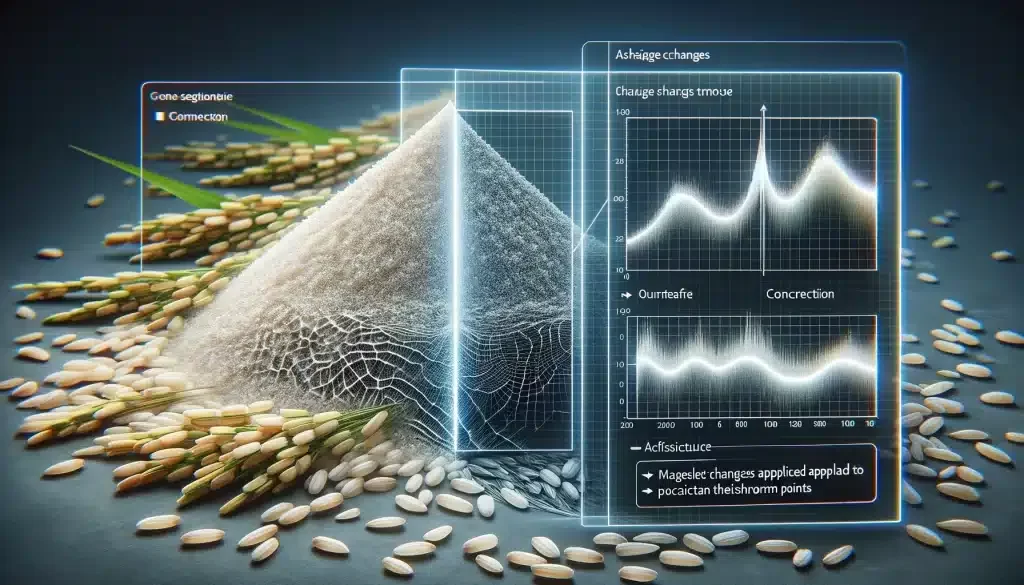Wavelet Adaptive Threshold Rice Chalky Segmentation Based On Histogram Correction
Exploring histogram correction and wavelet transform techniques for effective rice chalk segmentation, enhancing precision and overcoming noise in digital image processing.
During the rice chalk segmentation process, due to noise and other effects, the original histogram of the image shows obvious jagged changes. During the process of threshold selection and positioning, a large number of false threshold points will be generated, which affects the adaptive and accurate selection of threshold points. Through histogram correction, the histogram is smoothed, a large number of false threshold points are eliminated, and the positions and values of meaningful threshold points remain unchanged, achieving the purpose of anti-noise in the threshold selection process. And use wavelet transform to realize adaptive multi-resolution positioning of threshold points. Experiments show that effective segmentation of rice chalky areas can be achieved through histogram correction and wavelet adaptive positioning of multiple thresholds.
Introduction to Rice Chalk Segmentation Challenges
In the field of digital image processing, precise segmentation of features within an image is a crucial step for numerous applications, including agricultural analysis. One pertinent example is the segmentation of chalky areas in rice grains, which is vital for assessing rice quality. However, this process is often hindered by various challenges, including noise interference and the complexity of accurately identifying threshold points for segmentation. This article delves into an innovative approach that employs histogram correction and wavelet transform techniques to overcome these obstacles, thereby facilitating effective segmentation of chalky areas in rice grains.
Overcoming Noise with Histogram Correction
The initial challenge in the rice chalk segmentation process stems from the presence of noise and other distorting effects, which render the original histogram of the image with noticeable jagged changes. These distortions lead to the generation of a significant number of false threshold points during the threshold selection and positioning phase. Such inaccuracies not only impede the adaptive selection of threshold points but also compromise the precision of the segmentation process.
To address this issue, the proposed method incorporates a histogram correction technique. By smoothing the histogram, it is possible to eliminate a vast majority of the false threshold points. More importantly, this correction does not alter the positions and values of meaningful threshold points, thereby preserving the integrity of the image data. This step plays a pivotal role in enhancing the anti-noise capability of the threshold selection process, ensuring that the subsequent segmentation is both adaptive and accurate.
Enhancing Precision with Wavelet Transform
Further refining the segmentation process, the application of wavelet transform introduces an adaptive multi-resolution positioning of threshold points. Wavelet transform, known for its exceptional ability to analyze various frequencies within an image, allows for the detailed examination of different resolution levels. This facilitates the precise identification and positioning of threshold points, accommodating the inherent variability within the rice grain images. Consequently, this method enables a more nuanced and flexible approach to segmentation, tailoring the process to the specific characteristics of each image.
Experimental Validation and Results
Experimental evidence supports the efficacy of combining histogram correction with wavelet adaptive positioning of multiple thresholds. Through these techniques, effective segmentation of rice chalky areas is achieved, demonstrating a significant improvement over conventional methods. The segmentation results not only exhibit high precision but also demonstrate resilience against noise and other adverse effects that typically undermine the segmentation quality.
Conclusion and Implications for Agricultural Analysis
In conclusion, the integration of histogram correction and wavelet transform techniques offers a robust solution to the challenges encountered in the segmentation of chalky areas in rice grains. By addressing the critical issues of noise interference and the accurate identification of threshold points, this approach significantly enhances the reliability and adaptability of the segmentation process. Consequently, it holds promising implications for agricultural analysis, particularly in the context of assessing rice quality, and could potentially be adapted for similar challenges in other domains of digital image processing.
For futher details of this article and research, feel free to contact our team for assistance.
Original research was done by Wang Weixing, Liu Yongqiang
About ETprotein:
ETprotein, a reputable plant protein vegan protein Chinese factory manufacturer and supplier, is renowned for producing, stocking, exporting, and delivering the highest quality organic bulk vegan protein and plant proteins. They include Organic rice protein, clear rice protein, pea protein, clear pea protein, oat protein, watermelon seed protein, pumpkin seed protein, sunflower seed protein, mung bean protein, peanut protein, various of plant peptides etc. Their offerings, characterized by a neutral taste, non-GMO, allergen-free attributes, cater to a diverse range of industries. They serve nutraceutical, pharmaceutical, cosmeceutical, veterinary, as well as food and beverage finished product distributors, traders, and manufacturers across Europe, USA, Canada, Australia, Thailand, Japan, Korea, Brazil, and Chile, among others.
ETprotein specialization includes exporting and delivering tailor-made protein powder and finished nutritional supplements. Their extensive product range covers sectors like Food and Beverage, Sports Nutrition, Weight Management, Dietary Supplements, Health and Wellness Products, and Infant Formula, ensuring comprehensive solutions to meet all your protein needs.
As a trusted company by leading global food and beverage brands and Fortune 500 companies, ETprotein reinforces China’s reputation in the global arena. For more information or to get a free sample of their protein products, please contact them and email sales(at)ETprotein.com today.












